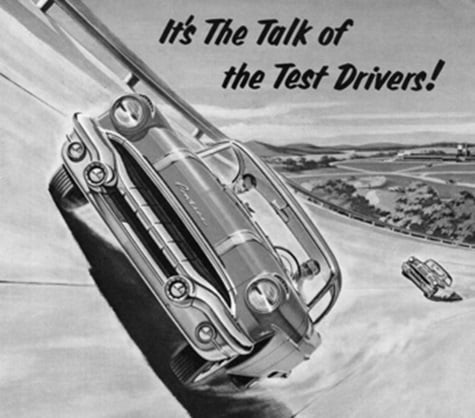For over a century, automobile manufacturers have developed their vehicles by driving them. Pre-production cars are taken out to test tracks and proving grounds where they are put through their paces by expert test drivers. And it is in this way -- by placing real people into direct contact with engineering concepts -- that brand identities are forged and specific vehicle models are readied for the marketplace.
Unfortunately, inefficiencies are hard-wired into this process, so there has always been a desire for improvement. For example, there are uncontrollable environmental factors at play -- such as the weather and track conditions -- and there are always delays incurred due to changing vehicle parts and/or tuning them to induce different vehicle behaviors. Since the 1960s, computer simulation has held the promise of creating ‘virtual proving grounds’ where such inefficiencies no longer exist. And in today’s vehicle development landscape, computer simulation plays a major role in an objective sense, allowing vehicle performance mapping via sophisticated vehicle models and scenario simulations. In addition, Driver-in-the-Loop (DIL) simulation is now capable of connecting expert test drivers to these sophisticated vehicle and environment models in order to bring the all-important subjective assessment layer into focus.
DIL simulators and the virtual test drive
If an appropriate engineering-class DIL simulator is in place, it is indeed possible to conduct virtual test drives, covering all the primary dynamics that might be required to develop a modern vehicle. In fact, at present, DIL simulation fidelity limitations exist only in the vehicle and environment modelling, not in the machinery, graphics, etc. associated with the currently available low latency, engineering-class DIL simulator technologies.
One interesting benefit of the vehicle development capability brought by DIL simulation is the expansion of engineering concept exploration space beyond the historically assigned areas. For example, all the usual vehicle test procedures, protocols, and scenarios can remain in effect -- and these can be made more efficient per the original goal of creating the virtual proving grounds methodologies -- but new items such as the following can be explored as well:
Full realization of “fail-often-fail-well”
Engineers can employ fail-often-fail-well strategies, evaluate/accept/reject models for rapid pre-prototyping, and move confidently and cost-effectively to the next stages of development. With DIL simulation integrated into the vehicle development process, even extreme failure cases can be explored in a safe and controlled environment.
Subjective-Objective correlation
New opportunities exist in the pursuit of relating subjective and objective assessments. This is primarily due to (i) the controlled laboratory environment of a DIL simulator session and the associated model parameters, (ii) the speed at which a test driver can be immersed in new scenarios, i.e. less time is allowed for external influences to introduce subjective bias, and (iii) the ability to conduct true double-blind experiments.
Understanding driver physiology and psychology
Virtual test drives are, of course, 'fully instrumented' from a vehicle perspective such that many difficult-to-instrument data channels (tire lateral slip angles, etc.) are readily available. But data acquisition can easily extend into the realm of driver measurements as well. Driver measurements have historically been associated with Human Factors DIL experiments, but new opportunities exist in areas such as the exploration of driver emotional responses to vehicle tuning changes, and driver interactions with on-board systems.
To learn more about the advantages of low latency, engineering-class driving simulators, download our FREE eBook, Looking down the road: Harnessing the benefits of driving simulator technology:


